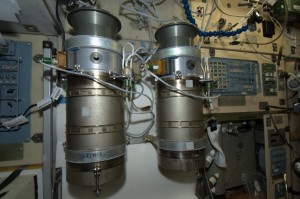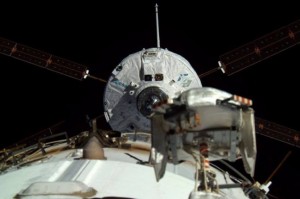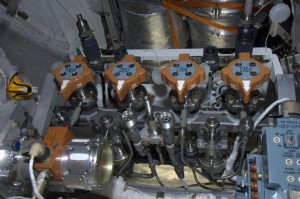Over on ESA’s fabulous Facebook page Ross Warren questioned the amount of oxygen that was transferred to the International Space Station in ATV Georges Lemaître’s first oxygen transfer which was reported here:
Ross Warren asked: Are you sure it wasn’t more than just 17 kg of oxygen? That seems low. Just curious….
Marcus De Deus Silva from the ATV Control Centre took the time to double-check and explain the numbers:
An interesting question and it is good that people are checking up on our work!
I did a plausibility check on the figures and they look OK. The mass of oxygen transferred corresponds well to a theoretical calculation. I have put the calculation steps below with typical values.
The short answer is we cannot directly measure the mass and you need more information than was previously reported in the blog. The long answer follows which shows the calculation that gives an answer.
We reported that the transfer mass was about 17 kg. That was the original real-time estimate. After more thorough analysis the final reported transferred mass was 18.2 kg, or about 7% more than the real-time estimate. I assume that Ross estimates the difference to be more than this.
Short answer:
We cannot “weigh” the mass of oxygen transferred directly. Instead we measure the change in cabin pressure and derive the mass. However in order to do this you also need to know the size of pressurised volume in the International Space Station, the atmospheric temperature and the physical properties of oxygen gas.
Long answer:
Here is the calculation that you can do on the back of an envelope and a pocket calculator:
Here is a quick plausibility check:
The ideal gas law states:
(eq 1) Pressure * Volume = n * R * Temperature
n = number of moles of gas (amount of gas).
R = Universal Gas Constant
Now rearrange (eq 1) to express the amount of gas (n) in terms of pressure, temperature and volume:
(eq 2) n = Pressure * Volume /(R * Temperature)
For this transfer we assume that the Volume (the Station’s pressurised volume) and the Temperature (the temperature inside the Station) are nearly constant so the only factor affecting the pressure is the amount of gas in the atmosphere. This means that the change in the amount of gas (Delta n) is proportional to the change in pressure (Delta Pressure).
(eq 3) Delta n = Delta Pressure * Volume /(R * Temperature)
Now we can put numbers in to eq 3 making sure all the units are consistent:

Emergency oxygen tanks on International Space Station. Thanks to ATV and other cargo ships, these are not needed. Credits: ESA/NASA
Measured Delta Pressure = 12 mmHg equivalent to 1600 Pa [or N/m^2]
Space Station Volume = 854 m^3
R = Universal Gas Constant, 8.314472 J/(mol.K)
Cabin Temperature = 23 deg C equivalent to 296 Kelvin (average temperature
in ATV)
=> Delta n = 1600 * 854/(8.314472 * 296)
=> Delta n = 555.2 moles of O2
The molecular mass of oxygen gas O2 is 32 grams / mole
=> Mass of O2 transferred = 555.2 * 32 grams = 17766 grammes or about 17.8 kg
This is pretty close to the final reported mass of 18.2 kg.
So there you have it! Thanks Marcus and Ross, keep the questions coming.



 Automated Transfer Vehicle page
Automated Transfer Vehicle page ATV blog archive
ATV blog archive
Discussion: no comments